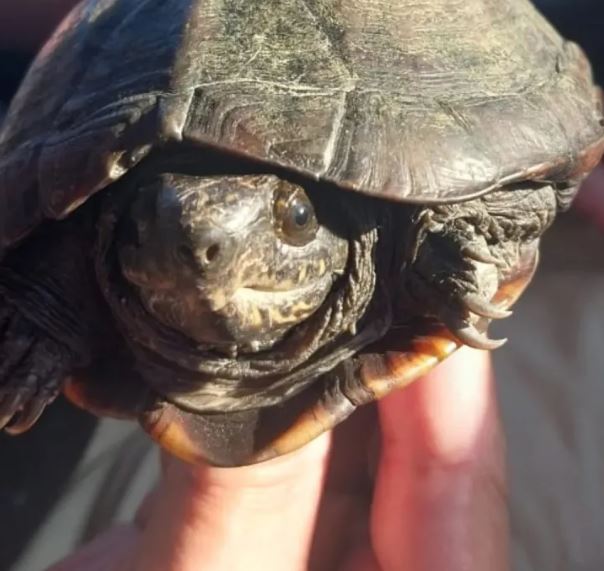A veterinarian in **Chaco** came across a surprising find: a species that had not been previously recorded, a **scorpion turtle**. Although it is an animal native to the region, it had never been seen in the province.
**Javier Aranda** was traveling through the province when he spotted a turtle by the side of the road. His first decision was to rescue it by taking it to a nearby field to prevent it from being run over.
However, the **color and shape caught his attention**, so he took several photographs and consulted with biologists and herpetologists.
The specialists’ response was surprising: it is the species “**Kinosternon scorpioides**,” known in this area as the “mud turtle” and internationally as the **”scorpion turtle”**.
The scorpion turtle: from Mexico to Argentina
“According to the specialists, it is a turtle species that ranges from **Mexico and Panama** to the north of Argentina, and it is the first time it has been reported in the humid Chaco region (East zone of our province), and it is endangered,” described Aranda.

In an interview with the local newspaper NORTE, Aranda mentioned that the news caused a **stir among professionals and specialists**, especially biologists and herpetologists. When asked about the location where the specimen was found, he preferred not to be “specific” for its protection.
“Its **diet is omnivorous**. It feeds on fish, insects, mollusks, frogs, tadpoles, crickets, crustaceans, and annelids. This turtle species has adapted and evolved to various ecosystems,” he explained.
“It lives in all **freshwater currents** around it, with a great capacity for adaptation,” added the veterinarian.
“During **drought periods**, they usually stay in damp soil and mud. In the dry season, they bury themselves in the mud until the water fills the lagoon or riverbed where they are, hence their name **’mud turtle’**,” he detailed.
“Generally, during the rainy season, when they are buried, they tend to come out in **search of a water source** like puddles. If none is available, they stay outside wandering until the rain stops and then hide again,” he recounted.
This is the turtle
According to the veterinarian, its shell is brown and measures **between 15 and 18 centimeters** in length, with males being larger. The head, legs, and tail are grey. At the tip of the **tail, there is a nail**, hence its international name, the scorpion turtle.
Aranda emphasized the importance of protecting wildlife by taking care when traveling on roads and also highlighted the need to **not remove wild animals** from their natural habitat.
Have you visited our YouTube channel? Subscribe now!

